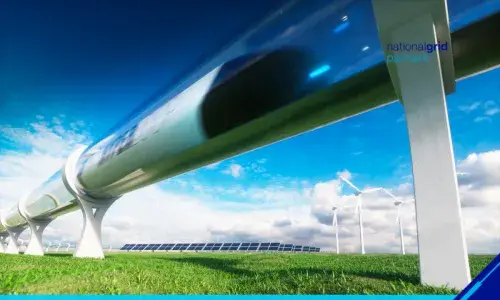
How smart homes and cities help consumers design their own future
The past decade has been the dawn of the Internet of Things.
With the advance of smartphones, sensors, inexpensive data collection and processing, and artificial intelligence, we’ve taught our homes and devices what time of day we leave the house, which route we drive to work—even how to brew the perfect lattè, every time. Lights, speakers, doorbells, ovens, egg trays: almost anything in our homes, it seems, can be smart.
The concept of smart homes and cities blends reality with the future. But what does it mean to be a smart home or a smart city? And why are smart homes and cities so important to me?
When smart devices collaborate
The opportunity of smart homes is first to benefit the consumer.
As consumers, we care most about comfort, safety, and convenience. And collectively, we should continue to invest in technologies that offer those benefits. It’s exciting to me that consumers are already adopting devices that do that; within five years, 40 percent of homes will have voice assistants.
The big players in this space are paving the way for numerous technologies to connect in more—and more meaningful—ways.
For me, smart homes and cities refers to the integration of all the devices that use electricity, and how devices like energy storage and solar can affect the way people use electricity.
Although busy consumers don’t always actively consider how they’re using energy, I’m happy to see a healthy growing demand for smart thermostats and residential energy storage as people take greater control of their consumption. Using smart devices and integrating energy technologies, consumers can lower their expenses and their carbon impact.
A solar-powered puzzle
Whether they realize it or not, consumers’ smart homes and cities support the electrical grid. Energy transaction used to be a one-way street, with utilities distributing energy to customers. Today, the grid supports consumers’ generating solar electricity themselves.
Most people feel great about solar energy. Who could argue with a clean, renewable energy source, endlessly abundant and increasingly affordable?
But there’s a hidden dilemma to solar. In some places, and at some hours, more solar energy gets produced than demand requires, so grid operators must distribute, limit or dispose of surplus solar to maintain balance on the grid. And whenever renewables don’t produce enough energy to meet demand, we need to fire up peaker plants for support.
But networks of smart homes working together could help manage the peaks and valleys and enable a cleaner, more resilient grid, making consumers safe and comfortable while saving money—and promoting a smarter energy future.
The future comes into focus
Utilities today have a huge opportunity to accelerate the pace and adoption of smart homes and cities. I’m committed to that vision of supporting innovation at all levels, so we can define what a utility of the future will look like. We’re investing in companies committed to the vision of a reliable two-way grid.
And when we team up with early-stage innovators, we’re offering a lot more than an initial round of funding. We support our partners throughout the life cycle of their business, continually guiding them on navigating the complex utilities sector.
When will we know smart homes and cities are truly working? I don’t think we’ll come to one clear “We’re here!” moment. Various segments will have their own metrics—such as when smart thermostats can control homes and coordinate with electric vehicles’ charging units.
The evolution of smart homes and cities will be a continual progression, which I hope and predict will get to the point where mass adoption is economically feasible. The more utilities we see supporting such innovation, the sooner we’ll see tomorrow’s vision become today’s reality.
Avra Durack is Director of Incubation at National Grid Partners.


